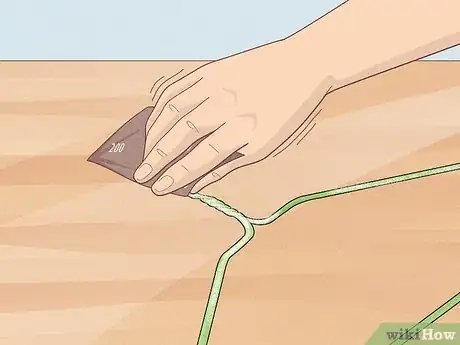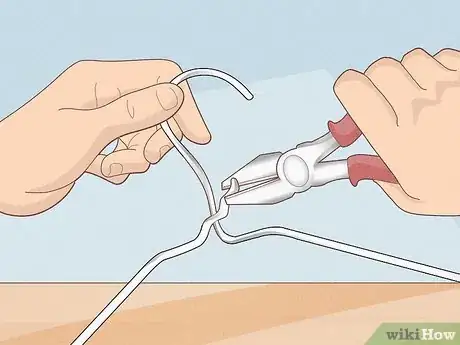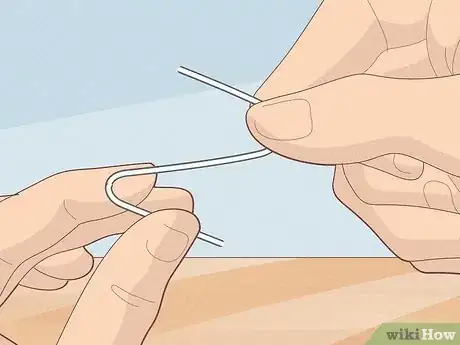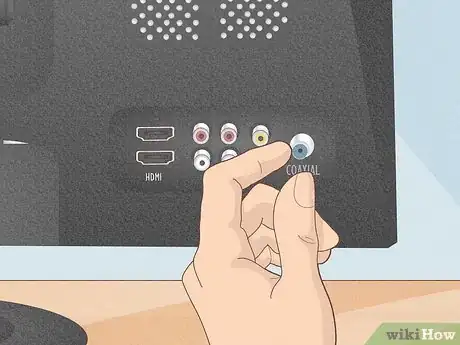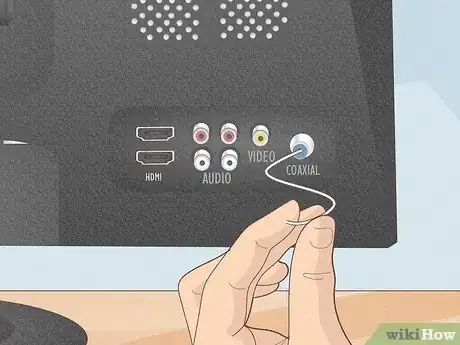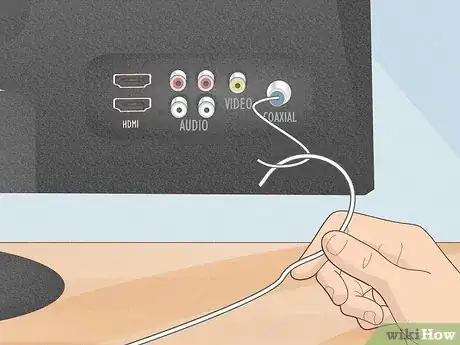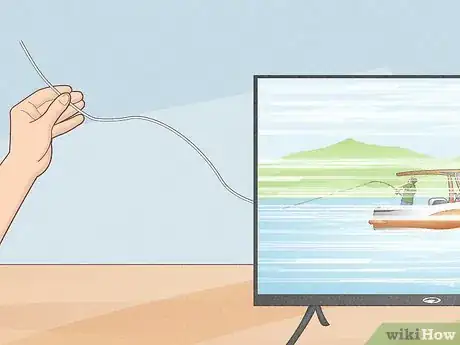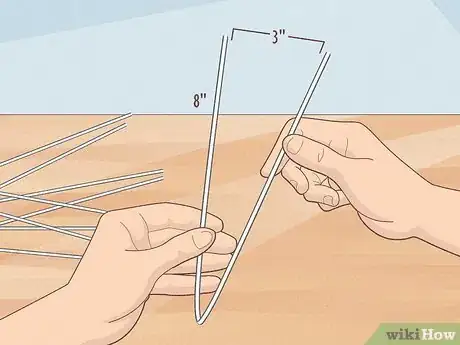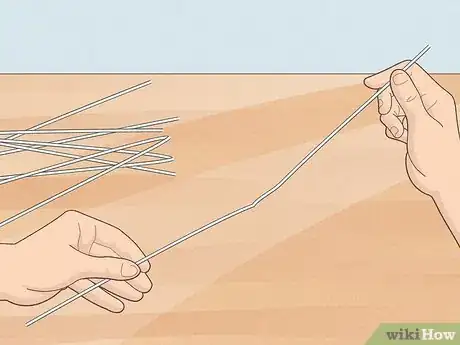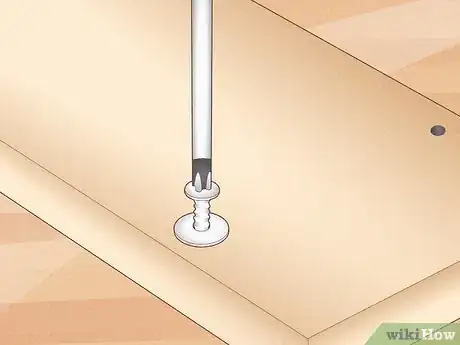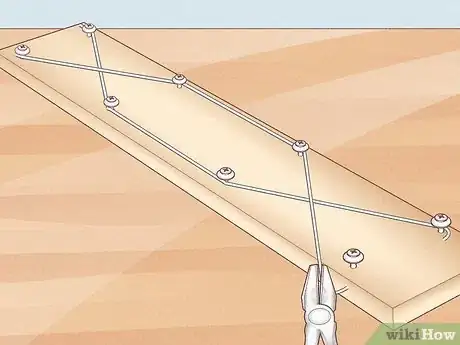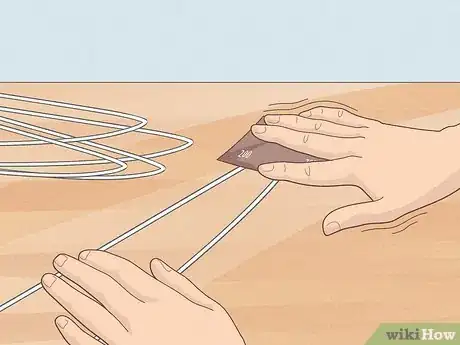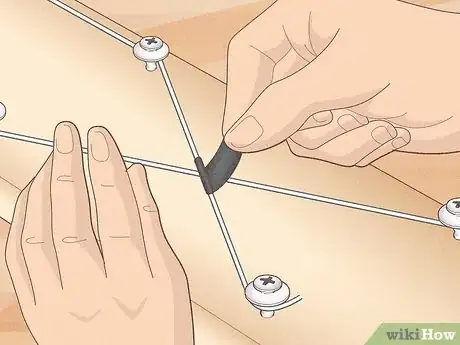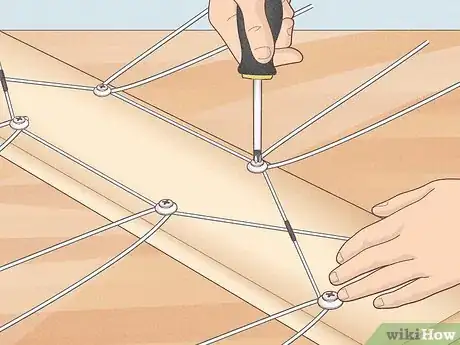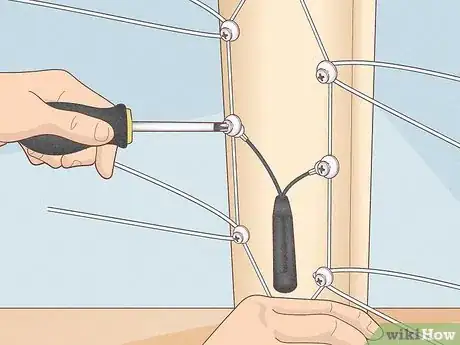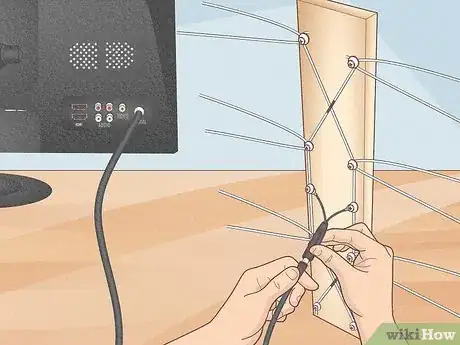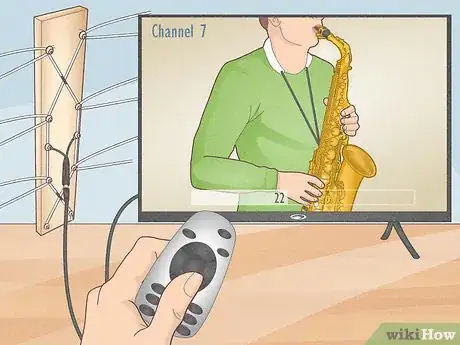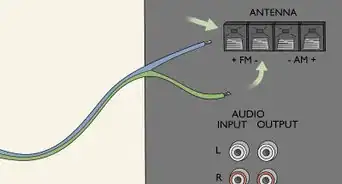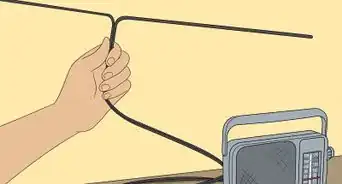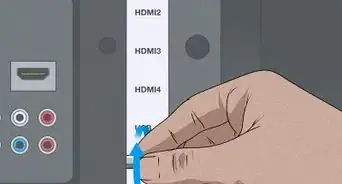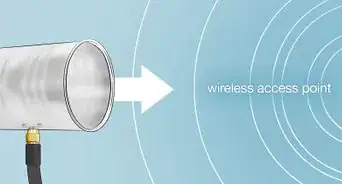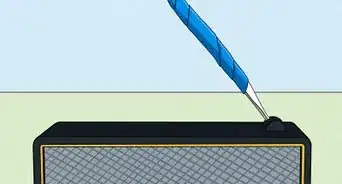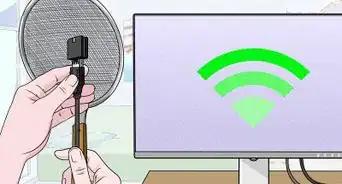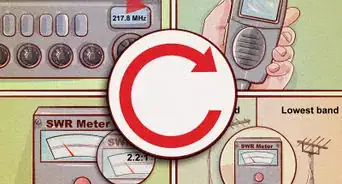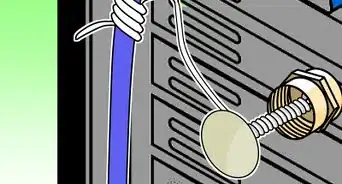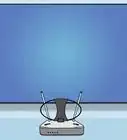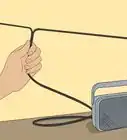This article was co-authored by wikiHow staff writer, Sam Browning. Sam Browning is an Emerging Technology Writer for wikiHow. Sam has not only written countless step-by-step articles for social media and tech, but he also has experience writing instructional articles on technology for Davidson College and reviewing video games. He is currently pursuing a degree in English with a minor in Digital Studies at Davidson.
This article has been viewed 19,522 times.
Learn more...
If your TV antenna broke, or cable is too expensive, do not worry! You can use common household items like a metal coat hanger to make your own antenna. Hangers can be used to make simple, less-effective antennas, or even powerful, complex antennas that will give you a much better chance at getting some free channels. This wikiHow article will teach you how to make an antenna and find channels for your TV using metal coat hangers.
Steps
Making a Simple Antenna
-
1Sand the bottom of the coat hanger’s hook down to the bare metal. By removing any paint or coating on your hanger, you will increase its ability to conduct electricity to and from your TV.
-
2Unwind your coat hanger. When unwinding your hanger, be sure to leave the hook intact. Otherwise, if your hanger is not wound, cut one side directly below the base of the hook.Advertisement
-
3Bend your paper clip. Ultimately, your paper clip should look something like an eighth note or a Z or S (depending on its orientation).
-
4Find the coaxial connector on your TV. It will likely look like a small, circular, metal tube with a little hole in the center.
-
5Push the paperclip into the connector.[1] When inserting the paperclip, be sure to use the small, straight end that juts out at a 90º angle. Using the analogies above, it would be the top of the eighth note/Z/S.
-
6Hang your coat hanger off of the protruding paperclip. Be sure that the point where the hook of the hanger touches the paperclip has been fully sanded for the best connection.
-
7Search for channels. Look through the available channels by manually flipping from channel to channel or using your TV’s Auto Program feature (if available). The closer you are to a broadcasting station, the more likely you will be to find some channels.
- If you have a Vizio TV, scan for channels using either Auto Search or Auto Channel Scan.
- On an Android TV, use the Auto Program feature to find your channels.
- For other TV brands, try searching online to see if your TV has an autoscan feature.
-
8Reposition your antenna and/or TV (optional). Repositioning your antenna and TV can give you access to more channels, so try moving both around your house and testing how many options each location has.
Making a More Powerful and Complex Antenna
-
1Measure out the screw spacings on the piece of wood. From the top of the board, make a small mark 2 inches (5.1 centimetres) in. Add a second mark 5.75 inches (14.6 centimetres) from the first mark, a third mark 5.75 inches (14.6 centimetres) from the second mark, and one final mark 5.75 inches (14.6 centimetres) from the third mark. Go in 0.5 inches (1.3 centimetres) from the edge at each of those marks, then make a clearer mark to denote where you will screw.[2]
-
2Cut the hooks off of the coat hangers, then cut four hangers in half. Your metal hangers will essentially serve as wires in this antenna, so there is no need for the hooks to remain attached. Once you have cut four hangers in half in the middle of the long base section, you should be left with 8 V-shaped hanger pieces.
-
3Trim each leg of each V to 8 inches and bend them so they are 3 in (7.6 cm) apart. These Vs will face outwards from your antenna, picking up TV channels from nearby stations. Also, try to make the angle at the base of the V as well defined as possible. Some coat hangers have a more gradual curve at each end, but it will be easier to build the antenna out of pieces with sharp angles.
-
4Straighten the remaining two hangers. These pieces should be as straight as possible for the upcoming steps. You can attempt to straighten them with your hands, but pliers will make the process much easier.
-
5Place washers over each of the marked screw holes and screw your screws in halfway. The room under each screw is so the bases of your V pieces can fit around them.
-
6Weave your straightened hangers around the screws. One hanger should wrap around the outside of the bottom-left screw, the outside of the two middle-right screws, and the outside of the top-left screw. Then, wrap the second hanger opposite the first, starting at the bottom-right screw, then continuing along the board.
- Individually, the hangers should look something like brackets with bent ends.
- Once both hangers are attached to the board, the resulting shape should resemble a rectangle with an hourglass on each end.
-
7Sand the wires and the bottom of each V where they contact a screw. By exposing the bare metal of your hangers, your antenna will achieve better conductivity.
-
8Wrap electrical tape around the points where the long wires meet. Stopping the two wires from coming in contact will essentially prevent an electrical “feedback loop” in your antenna. Using the analogies above, the points where the wires overlap would be the middle of the hourglasses.
-
9Place each V around a screw so its ends are pointing outwards. These ends will serve as the projections of the antenna intended to pick up TV channels.
-
10Attach an impedance-matching transformer to the front of the board and tighten your screws. An impedance-matching transformer allows maximum power transfer by matching the impedance of the antenna and the TV.[3] Depending on the transformer, you may be able to attach it using two more screws in the middle of your long wires or by soldering it on.
- If you are using more screws, be sure to sand the long wires where they touch the screws to increase the flow of electricity through the antenna!
-
11Connect a coaxial cable to the antenna and the TV. The cable will connect to your impedance-matching transformer on the antenna and the coaxial connector on your TV. Your TV’s coaxial connector should look like a small metal tube with a hole in the center.
-
12Turn your TV on, search for channels, and reposition your antenna (optional). Moving your antenna can give you access to more channels, so try moving it around your house and testing how many options each location has.
- The closer you are to a broadcasting station, the more likely you will be to find some channels.
Things You’ll Need
Making a Simple Antenna
- 1 metal coat hanger
- Sandpaper or a nail file
- 1 small, metal paperclip
- Scotch tape
Making a More Powerful and Complex Antenna
- 3 in (7.6 cm) by 20 in (51 cm) piece of wood
- 6 metal coat hangers
- 10 screws
- 10 washers
- Electrical tape
- Impedance-matching transformer (IMT)
- Coaxial cable
- Drill
- Pencil/marker
- Wire cutters
- Screwdriver
- Soldering iron
References
About This Article
1. Sand the bottom of your metal coat hanger's hook down to the bare metal.
2. Detach one side of your hanger from the hook by unwinding it or cutting one section just below the hook.
3. Bend your paper clip into a shape that looks something like a Z, S, or eighth note.
4. Insert the straight end of the paper clip into your TV's coaxial connector.
5. Hang your coat hanger off of the protruding end of the paper clip.
6. Search for channels manually or using the auto scan feature (if your TV is compatible).
7. Reposition your TV and antenna for better reception.
